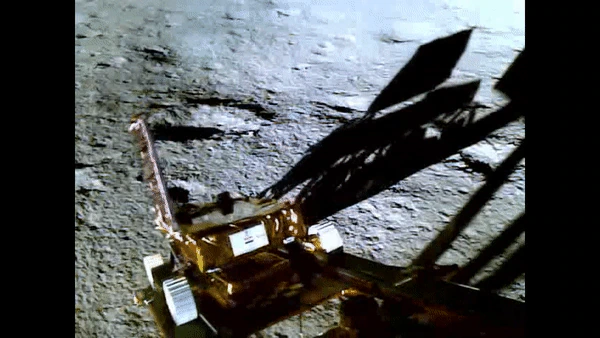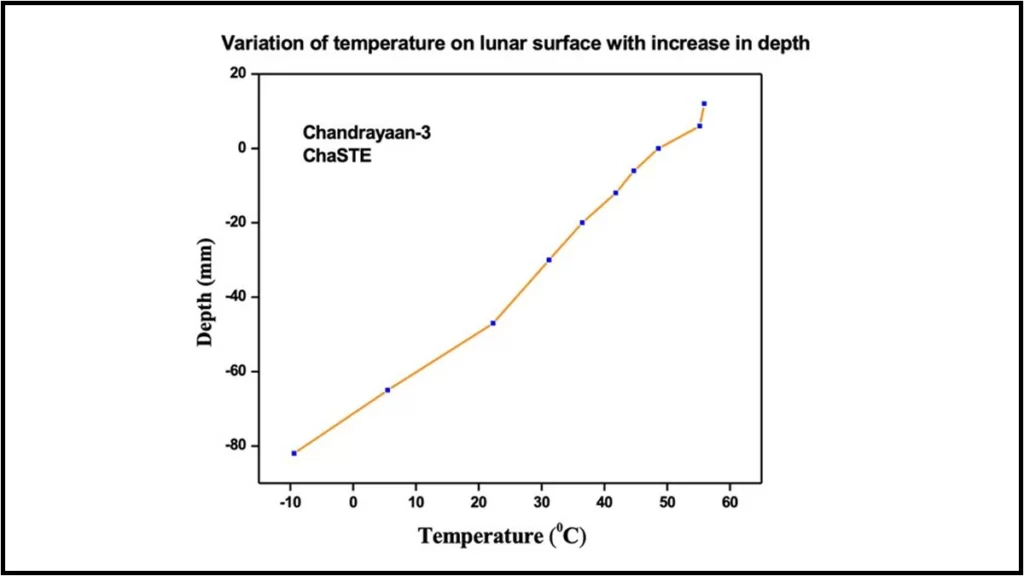The spacecraft, which touched down on the Moon’s surface on August 23, has started carrying out experiments and transmitting useful data to Isro’s main office. Chandrayaan -3

In Short :
1- One of the key components of the Chandrayaan-3 mission is Chaste
2- The Chandra’s Surface Thermophysical Experiment (ChaSTE) payload onboard Vikram Lander
3- ChaSTE is designed to measure the temperature profile
India’s Chandrayaan-3 has been working hard since it touched down on the Moon’s surface a few days ago. A hole has been made in the Moon’s surface by the Vikram lander.
The spacecraft, which touched down on the Moon’s surface on August 23, has started carrying out experiments and transmitting useful data to Isro’s main office.
Chandra’s Surface Thermophysical Experiment (ChaSTE) payload on the Vikram Lander is one of the mission’s main components.
The first findings from the ChaSTE payload were made public by Isro. The information was displayed as a graph showing the fluctuations in temperature of the lunar surface and near-surface at various depths, as seen during the probe’s entry. This represents the first profile of the lunar south pole, which is an important milestone for lunar exploration.

ChaSTE is made to measure the temperature profile of the lunar topsoil near the pole, giving important information about how the moon’s surface is heated. The device has a temperature probe with a controlled penetration mechanism that can go down 10 cm below the surface. The probe has ten separate temperature sensors, enabling precise and thorough readings.
A team from the Vikram Sarabhai Space Centre’s Space Physics Laboratory (SPL) and Ahmedabad’s Physical Research Laboratory worked together to produce this payload.
It is anticipated that these observations will yield useful information about how the lunar surface reacts to temperature changes, assisting in the comprehension of the processes that created the Moon’s surface over millions of years.
More information is anticipated to be sent back to Isro in the upcoming days as detailed observations continue to be made.
For India’s space exploration activities, the accomplishment of the ChaSTE payload and the Chandrayaan-3 mission as a whole represents a key turning point.
It not only improves our knowledge of the moon but also lays the path for future crewed missions to the moon, opening up potential new avenues for exploration and scientific discovery.
📰 Latest from Sejal News Network
- Subcontract India – the confluence of Indian Engineering Brilliance
- Daily Horoscope for 7 Nov 2025 — Friday
- Daily Horoscope for 6 Nov 2025 — Thursday
Published by Sejal News Network



